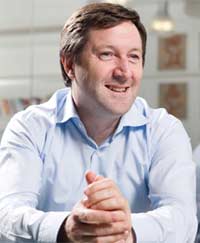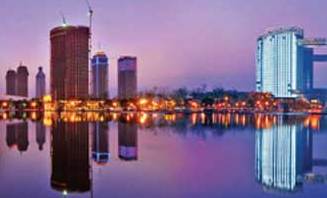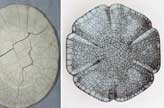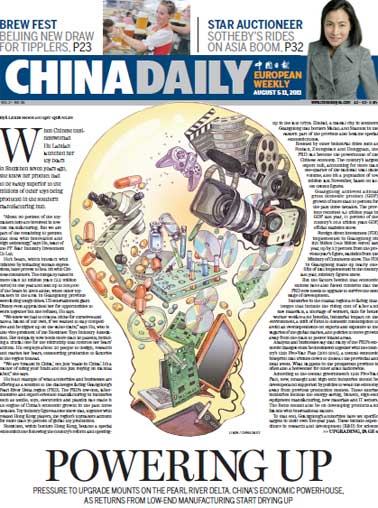Top draw
Updated: 2011-08-05 11:35
By Alexis Hooi (China Daily)
Irish supply chain entrepreneur says the Pearl River Delta is still the place to be
When Irishman Liam Casey arrived in southern China more than a decade ago to seek his fortune, he came "alone and unsupervised". Now the head of a company which recorded $413 million (292 million euros) in revenue last year, Casey says it is exactly the same "unsupervised" people ending up in Shenzhen who are fueling the success of one of the country's most developed cities.
|
 Liam Casey, founder and CEO of PCH International, says the city of Shenzhen has a very "can-do" attitude. [Provided to China Daily] |
"Everybody comes here unsupervised. It doesn't matter if they are working in the production line, in the factory, in a bank or in an office. They come to Shenzhen chasing a dream," Casey says. "The innovative flair has got to come naturally. The city has a very 'can-do' attitude."
Casey, 45, is the founder and chief executive officer of PCH International, a leading supply chain management company that provides the vital link between leading Western technology brands and Chinese manufacturers in the accessories market including smartphones, tablets and e-book readers. The company describes its clients as "the world's leading technology and consumer electronics brands".
Casey founded PCH in Cork, Ireland, in 1996. The company advises on product design, supervises outside manufacturing, and packages and sends the products to customers. PCH has grown to include 1,200 employees worldwide, with most of them in its operational headquarters in Shenzhen.
Shenzhen became one of China's boomtowns after it was designated a special economic zone in 1980 in Guangdong province's Pearl River Delta (PRD), which itself is considered an economic powerhouse of the country fueled by low-cost manufacturing in sectors such as toys, textile and electronics. Huge and rapid foreign investment have since helped build the city from a small village bordering Hong Kong into the home of the Shenzhen Stock Exchange and as one of the busiest container ports in China.
Speaking from his office in Shenzhen's flashy Jintang Street, Casey shrugs off ongoing concerns that industries in the PRD, faced with problems like rising wages and labor shortages, need to upgrade.
"The labor shortage is a fantastic thing for us. We look for very smart people. We hire some really great local engineers and graduates from the US like those from Stanford University. You put them together, that's magic," he says.
"When I first came to China, it was a place to make cheap products. It then became a cheap place to make products. Today, for the products we manage, it is the only place to make these products, and that is the Pearl River Delta.
"Other parts of China don't have the raw materials, they don't have the logistics infrastructure or the skilled workforce that you have here. Yes, they have a cheap workforce, but the products we make are high quality, they need to be delivered on time, correctly. This is the best place for us to operate from."
Still, Casey says doing business in China in the initial stages had its challenges. "When I first came, I dealt directly with the factories. All you had to do was find the factory and you were in business," he says.
"But the challenge of taking a product from here to anywhere in the world was hugely difficult. The difficulty was in the communication and the service. It could take you seven days in China what it would take you one day in the West. But you could do in one day here in China what it would take you seven days in the West," he says.
"So if you wanted to open a new tool, make new samples, it would take you one day in China, no problem. But when it came to getting the packaging right, the detail right, just making sure that it looked good, that would take you one day in the Western world. But here? Seven days. Which was crazy.
"That was where the opportunity was, to focus on what was taking seven days and reducing that."
"We can take a product from a production line here in China, on a Monday, and we can deliver it to a consumer's home in New York, on a Wednesday. You cut out all of the infrastructure that's needed, all of the inventory in the channel," he says.
"In the past, you'd put it on the sea, you'd send it to New Jersey, it would go on to a warehouse and sit there or wait for the orders to come in. The barrier to entry for customers was huge and the cost of holding the inventory was phenomenal. Now that's disappeared, because we've shrunk the supply chain down to a number of days."
Many of Casey's customers are based in California and PCH employees in Ireland leverage the country's central time zone for English speakers to deal with clients rather than tired Chinese partners working late at night.
PCH has built up a formidable database of more than 1,000 suppliers and now has about 100 partner manufacturers.
Cork functions as the company's administrative center, while the Chinese contract manufacturers handle the supply of the products.
"This is the challenge of globalization. You can't do everything everywhere. So you have to find where is good for each part of the value chain. Ireland for us is the best location to manage the US and Europe," says Casey, who received the Ernst and Young Entrepreneur of the Year - Ireland award in 2007.
"This is also the opportunity for Chinese companies, to think global and to act global."
Casey says the Irish culture is actually very similar to that of the Chinese, which boasts a "very good work ethic" that helps offer fantastic opportunities to work together.
"Shenzhen is the natural commerce capital of China. The people that come here are entrepreneurial. They're creative and want to be successful."
E-paper

Double vision
Prosperous Hangzhou banks on creative energies to bridge traditional and modern sectors
Minding matters
A touch of glass
No longer going by the book
Specials

Ancient plate broken
An ancient porcelain plate was accidentally destroyed during a research in the Palace Museum.

Selfless actions
A 20-year-old girl becomes an Internet star for giving her first kiss to a drowning old man.

Space race
Homebuyers are learning the hard facts of supply and demand: too many cars and too few parking spaces.
